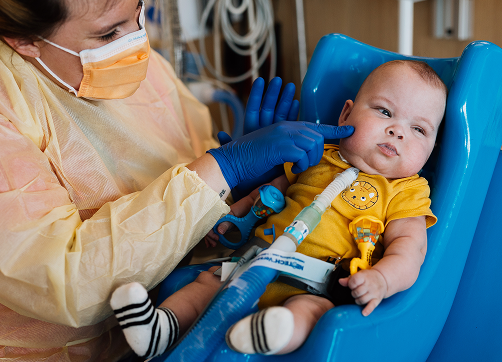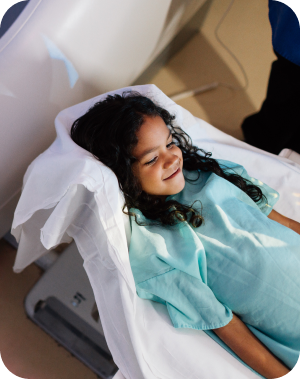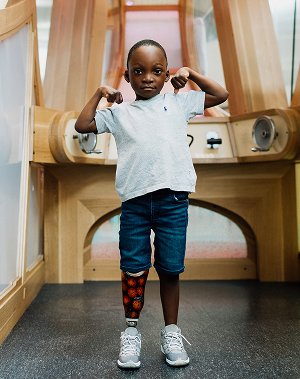branchiootorenal spectrum disorder


about condition
Branchio-oto-renal (BOR) syndrome, also known as Melnick-Fraser syndrome, is a congenital (present at birth) condition characterized by branchial arch malformations. Sometimes, it may not be noticeable at birth but will appear later on. These malformations include branchial cleft cysts (small fluid-filled sacs), fistulas (sinus tracts/tunnels), ear and renal (kidney) malformations.
Branchiootic (BO) syndrome includes many of the same features as BOR syndrome, but affected individuals do not have kidney malformations. The two conditions are otherwise so similar that researchers often consider them together as BOR/BO syndrome or branchiootorenal spectrum disorders. For this reason, you will notice the terms BOR/BO syndrome, BOR syndrome or BO syndrome used interchangeably throughout this page. BOR/BO syndrome varies widely among affected individuals and even among members of the same family.
Let’s break this down a bit further to understand the meanings behind the syndrome names:
The term Branchio refers to the second branchial arch, a structure in the developing embryo that forms the tissues in the front and side of the neck, as well as other tissues and organs. In those with BOR/BO syndrome, early disruptions in the development of the second branchial arch can result in the formation of masses in the neck, called branchial cleft cysts. Affected individuals may also have small holes or openings called fistulas in the side of the neck just above the collarbone (almost always on one side only). The difference between the two is that branchial fistulas/sinus tracts occur when an opening forms specifically between the skin and throat lining, which then drains mucus out of the neck. In contrast, branchial cleft cysts happen when there is no external opening and liquid cannot drain out of the neck. Both of these can cause health problems if they become infected, as well as cause challenges with eating and swallowing. When this happens, they are often removed surgically because they almost never go away on their own.
The terms oto- and -otic here refer to the ear and its malformations. Most with BOR/BO syndrome have hearing loss and other ear malformations. The hearing loss can be sensorineural (affecting structures of the inner ear), conductive (affecting the ossicles/small bones of the middle ear), or mixed hearing loss, meaning it is caused by a combination of the inner ear and middle ear malformations. The outer ears are often misshapen or cupped. Some affected individuals have tiny holes in the skin or extra bits of tissue in front of the ear. These are called preauricular pits and preauricular tags, respectively.
Renal refers to the kidneys. BOR syndrome (but not BO syndrome) causes malformations of kidney structure and function. These malformations can vary from mild to severe; affecting one or both kidneys. In some cases, end-stage renal disease (ESRD) develops later in life. This serious condition occurs when the kidneys become unable to filter fluids and waste products from the body effectively.
what are the characteristics and features of BOR syndrome?
- Second Branchial Arch malformations; these may include –
- Masses or cysts in the neck
- Fistulas/sinus tracts (small holes in the front of side of neck draining fluid)
- Outer, middle and/or inner ear malformations
- Narrow ear canal
- Pits or tags in the front of the ear
- Small or cupped outer ears
- Hearing loss (middle/conductive, inner/sensorineural or mixed)
- Tear duct malformations
- Facial asymmetry
- Mild, moderate or severe kidney malformations (not fully formed or one may be missing)
- Possible cleft palate
what are the characteristics and features of BO syndrome?
- Second Branchial Arch Cleft malformations; these may include –
- Same as above for BOR but excluding renal/kidney malformations
For both syndromes, surgical intervention may be required for some of the branchial cleft malformations
how do I know if my child will be born with this condition?
The diagnosis of BOR/BO syndrome can be made when at least two of five features (branchial malformations, hearing loss, preauricular pits, malformations of the part of the ear that projects from the head and kidney malformations) are present in an individual with two or more affected family remembers, or three features are present in an individual with no affected family members.
Testing generally involves ultrasound, CT and MRI imaging. Evaluation of hearing function, along with CT imaging of the temporal bone to identify the middle and inner ear malformations should be performed. Renal (kidney) malformations are tested by urinalysis, renal function tests and imaging studies such as renal ultrasonography and CT imaging. Genetic testing should also be performed for mutations in the genes responsible for BOR/BO syndrome. This can confirm any clinical diagnosis suspected for the syndrome. Families already having the syndrome can test children for the same mutation already known in the family.


how is BOR syndrome treated?
Treatment is focused on the specific symptoms apparent in each individual since the severity of the syndrome varies widely. Several specialties may be involved throughout the child’s life, such as audiology, otolaryngology (ENT)/otology for hearing, ear malformations and for cysts/throat issues, ophthalmology for eye issues, and nephrology for kidney malformations. If a cleft palate exists, craniofacial/reconstructive surgery may be required and/or for malformations of the neck or ears. Early medical intervention is important to ensure that children with this syndrome remain as healthy as possible.
faqs
It is estimated that 1 in 40,000 individuals have this condition. It affects males and females equally. BOR/BO syndrome is found in 2 to 3 percent of children with profound deafness.
Yes, BOR/BO is a congenital syndrome often apparent at birth. The inheritance is an autosomal dominant pattern, which means the condition has a 50 percent chance of being passed from a positive parent to a child. Some cases of this syndrome are inherited while others are spontaneous new occurrences for the first time in a family. Hearing loss may not be apparent at birth and should be monitored throughout the child’s life.
Even though surgeries might be in their future, individuals may have a typical life span. Medical management of the kidneys in BOR syndrome is important in keeping them healthy. Hearing devices and watching for neck cysts that need medical attention is important also for the quality of life with both BOR and BO syndrome. Individuals with these conditions may not present with the branchial cysts early on, so it’s important to maintain semi-annual doctor appointments.
Currently, there are three known genes causative: EYA1, SIX1 and SIX5. About 40 percent of individuals with this condition have a mutation in the EYA1 gene. SIX1 gene mutations are much less responsible for the condition. Interestingly, researchers question whether SIX5 gene mutations are responsible for BOR syndrome since such a small number are found in those affected. Furthermore, some of these affected individuals who were originally reported to have SIX5 gene mutations were later found also to have EYA1 gene mutations; therefore, researchers suspect that the EYA1 gene mutations may be the actual cause of the condition in these individuals. There is a remaining percentage of individuals that appear to have BOR/BO syndrome, but an identified mutation is not found in any of these three genes, thus the cause is unknown.
Gene EYA1; location – Chromosome 8
- This gene causes mutations in about 40% of individuals with BOR syndrome
- Mutations in this gene cause disruptions during the development of the kidneys
Gene SIX1; location – Chromosome 14
- Mutation changes in this gene are found in only about 2% of individuals with BOR syndrome
- The majority of persons with mutations in this gene do not have renal (kidney) malformation
Gene SIX5; location – Chromosome 19
- Mutations in this gene are found in about 0-3.1% of individuals with BOR
- Hearing loss may not be present in these individuals
The EYA1 gene gives instructions for making a protein that plays an important role in regulating the activity of genes during development. This protein interacts with other proteins, including a group known as SIX proteins, that turn on or turn off genes that are important for normal development. These protein interactions appear to be vital for several tissue formations, which include the second branchial arch. When there is an interruption in this branchial arch, tissues do not form correctly in the front or side of the neck and can cause malformations of the eyes, ears and kidneys.
- MelnickFraser syndrome
- Branchioototenal syndrome
- Branchiootic syndrome
- BOR/BO syndrome
- BOR
- BO syndrome
- BOS
- Branchiootorenal dysplasia
- Branchiootorenal spectrum disorders
- Branchio-oculo-facial syndrome
- Oculo-auriculo-vertebral spectrum
- Treacher Collins syndrome
- Towns Brocks syndrome
here when you need us
Whether you’re looking for the right provider, ready to make an appointment, or need care right now—we’re here to help you take the next step with confidence.
